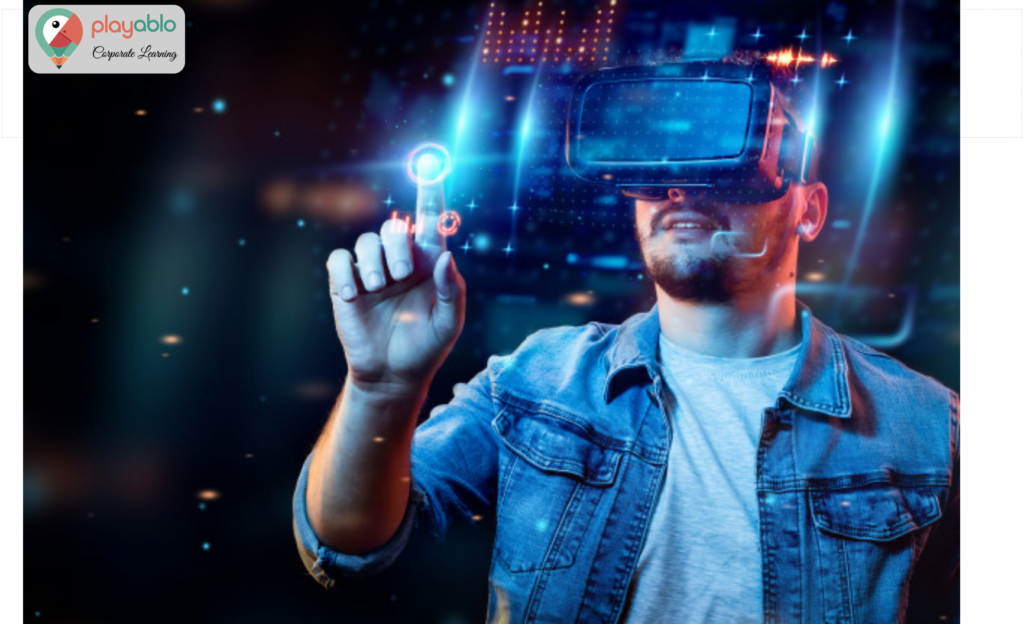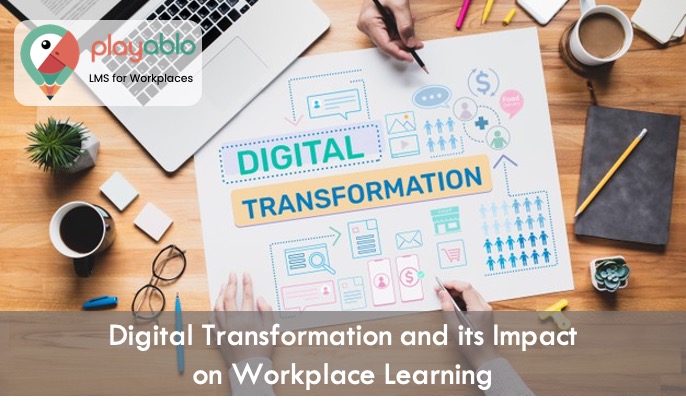Within a year of the COVID-19 pandemic hitting us, we have witnessed a massive digital transformation in the way organisations across sectors and regions do business. As per a McKinsey Global Survey of executives, “Companies have accelerated the digitization of their customer and supply-chain interactions and of their internal operations by three to four years. And the share of digital or digitally enabled products in their portfolios has accelerated by a shocking seven years.”
The report further states the following facts: A significant chunk of the respondents said that organisations have put a hold on reactive, temporary measures to meet the new demands placed before them. And the response rates have multiplied — with companies responding faster than before.
Essentially, organisations want the changes to be long-lasting and have resorted to a variety of investments that will be permanent. Many of the surveyed executives stated that the funding for digital initiatives has increased more than anything else. There has also been a boost in the number of people in technology roles, and the number of customers.
Table of Contents
The COVID-19 Pandemic and Digital Transformation

So how can companies stay ahead of their competitors in this new business and economic environment? Well, the answer lies in how well you incorporate new strategies and practices. And what is one of the most critical elements of your organisational strategy? Technology adoption!
Most of the companies which have responded successfully to the crisis are those that have introduced technology capabilities. Their response includes filling gaps in technology talent and the usage of advanced technologies — coupled with increased speed in experimenting and innovating. Digital transformation has assumed a position of high importance in this critical situation.
Read More: 5 Trends Companies are Adopting to Prepare for the Post-pandemic Workplace.
Almost the entire customer base for businesses is now online. Therefore, companies need to respond to the shift on time by adopting a rapid shift toward interacting with customers through digital channels. The offered products need to be a mix of online and offline platforms.

In fact, as per the same report mentioned above: “Across regions, the results suggest a seven-year increase, on average, in the rate at which companies are developing these products and services. Once again, the leap is even greater—ten years—in developed Asia. Respondents also report a similar mix of types of digital products in their portfolios before and during the pandemic. This finding suggests that during the crisis, companies have probably refocused their offerings rather than made huge leaps in product development in the span of a few months.”
Read More: Remote Learning in The Post-Pandemic Workplace
Again, apart from the customer-facing elements, companies must also focus on their core internal processes. Digital transformation has become a necessity in areas such as the back-office, production, and R&D processes. And with a majority of the staff operating from remote locations, there needs to be a transition in the way businesses reskill and upskill employees. Cloud migration and online learning platforms are some of the tools, which have contributed toward an accelerated evolution in workplace learning. Not only are these measures cost-effective, but they also will prove to be beneficial in the long run.
Why is Workplace Learning a prime candidate for Digital Transformation?
The exercise of transformation for any department must promise at least one, preferably more, of the following: CHEAPER – FASTER – BETTER. The digital transition for the L&D function makes all of these promises. Here’s how.
FASTER: With the adoption of technologies such as microlearning and m-learning, companies can deliver digital sessions anywhere, anytime. Organisations can roll out learning materials to several employees all at once — at one go — even if your workforce is diverse and is scattered across multiple regions. While the traditional ILT classrooms use up time in activities like booking a venue and travel, eLearning is rapid and efficient.
BETTER: Segmenting eLearning modules into digestible microlearning chunks makes it easier for learners to absorb information. It also leads to increased retention rates. What’s more? With the adoption of eLearning, you ensure uniform learning everywhere. You can deliver your training material straight to your employees, allowing them the flexibility to complete it on their own time, in the comfort of their own home. Training materials that are not subject to interpretation by a trainer are more likely to result in training consistency.
Read More: 5 Reasons Why Uniform Workplace Learning is Key to Sustained Success in a Growing Organisation
CHEAPER: Offline sessions come with several added costs such as instructor fees, venue rentals, and travel expenses. But when you use digital learning technologies such as an LMS, you only spend in a one-time implementation process. You cut down on almost all the other extra costs. As a result, you ensure a more cost-effective solution that gives you a better ROI!
Suggested Strategies for Digital Transformation of Workplace Learning

With the entire globe going digital, technical innovations in learning and development have become a necessity. Digital transformation propels the evolution of workplace learning by equipping organisations with advanced learning and skill development strategies. Let us explore.
Customisation of Training Modules
Your organisation is a mix of several generations of employees, working parallelly within a single premise. When you introduce digital transformation in your training programs to adopt online platforms like PlayAblo, you can offer your learners a personalised learning experience. By using technologies such as Machine Learning and AI, businesses can decide whether to have video content, text-based modules, mobile-friendly micro-learning, brief sessions, or long classes.
A Boost in Accessibility
One of the best contributions of digital transformation is the invention of mobile learning. And in addition to this, consider bringing in newer technologies to enhance workplace learning, such as combining IoT capabilities to include other devices like home assistant gadgets and wearables. When you use these elements to propel your evolution of workplace learning, you enable the absorption of knowledge in a non-time- and geography-bound manner.
Ad: PlayAblo’s Enterprise-Grade Micro-Learning platform is for the modern corporate learner. Moreover, micro-Learning, along with assessments and gamification features, ensures learning outcome measurement along with sustained engagement.
Find out more and request a custom demo!
NextGen Technologies
Another significant upside of digital transformation in workplace learning and upskilling is the inclusion of augmented and Virtual Reality, blockchain, and AI technologies. AI can contribute further in the transition toward customised learning programs. On the other hand, because of its anti-hacking promise, Blockchain ensures that the employees’ data is secure and breach-proof. You can also use this technology for the creation of digital certificates. Finally, AR and VR enable you to offer a hands-on learning experience to your employees. It finds the maximum usage in the healthcare and manufacturing domains.
Challenges While Implementing Digital Transformation in Your Business

So, yes, digital transformation in the evolution of workplace learning is of primary importance. But can you face issues while deploying the same in your business? Well, as per a report by Deloitte, “70% of public sector employees feel that their digital abilities are behind the private sector employees. Why? The key decision-makers take minimal efforts to change the scenario. The comfort zone of doing things in a way that they have always been done mixed with the fear of failure keeps businesses from exploring new technologies and processes.”
No Experts in the Realm of Digital Transformation
One of the major roadblocks in digitally transforming your L&D function comes because there is a shortage of digital transformation experts in-house. In most cases, companies cannot comprehend the fact that a complete transition is a continuous process and not a one-time solution. In the beginning, you can hire a consultant. But in the long run, you need to take the services of a reliable provider like PlayAblo, who can guide you through the entire process — from the onset to the outset.
Data Silos
Another reason why most digital transformation projects fail is that companies keep data in silos. In traditional businesses, there are no centralised systems where the data is stored. Therefore, the data, which would help advance the learning efforts, is stored in multiple silos. The information has no scope of mingling with each other. Thus, it becomes challenging to make crucial business decisions or adopt technologically embedded training initiatives.
Legacy Materials
What is legacy content? It is like a technology-driven system and infrastructure that does not get frequent updates. What happens here is – when a legacy system is in place, you cannot easily incorporate innovations. You need to think of ways to upgrade, replace, or remove the obsolete info. And the entire process involves costs and money.
Conclusion
In a nutshell, it must be clear by now that digital transformation can make corporate learning and skill development more efficient. But yes, there are specific challenges that you need to overcome while implementing the same. If you need tips on how to tackle the obstacles, we are just a buzz away!
Ad: PlayAblo’s Enterprise-Grade Micro-Learning platform is for the modern corporate learner. Moreover, micro-Learning, along with assessments and gamification features, ensures learning outcome measurement along with sustained engagement.
Find out more and request a custom demo!






